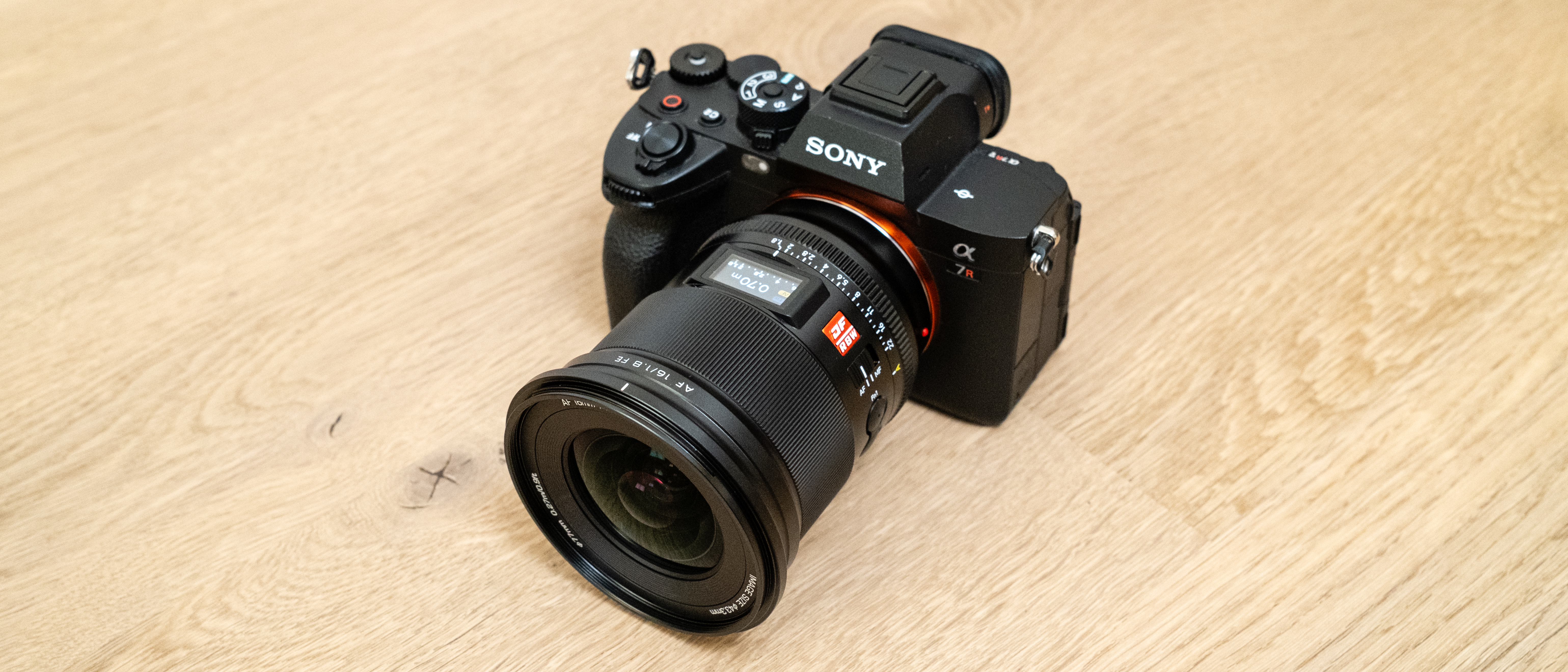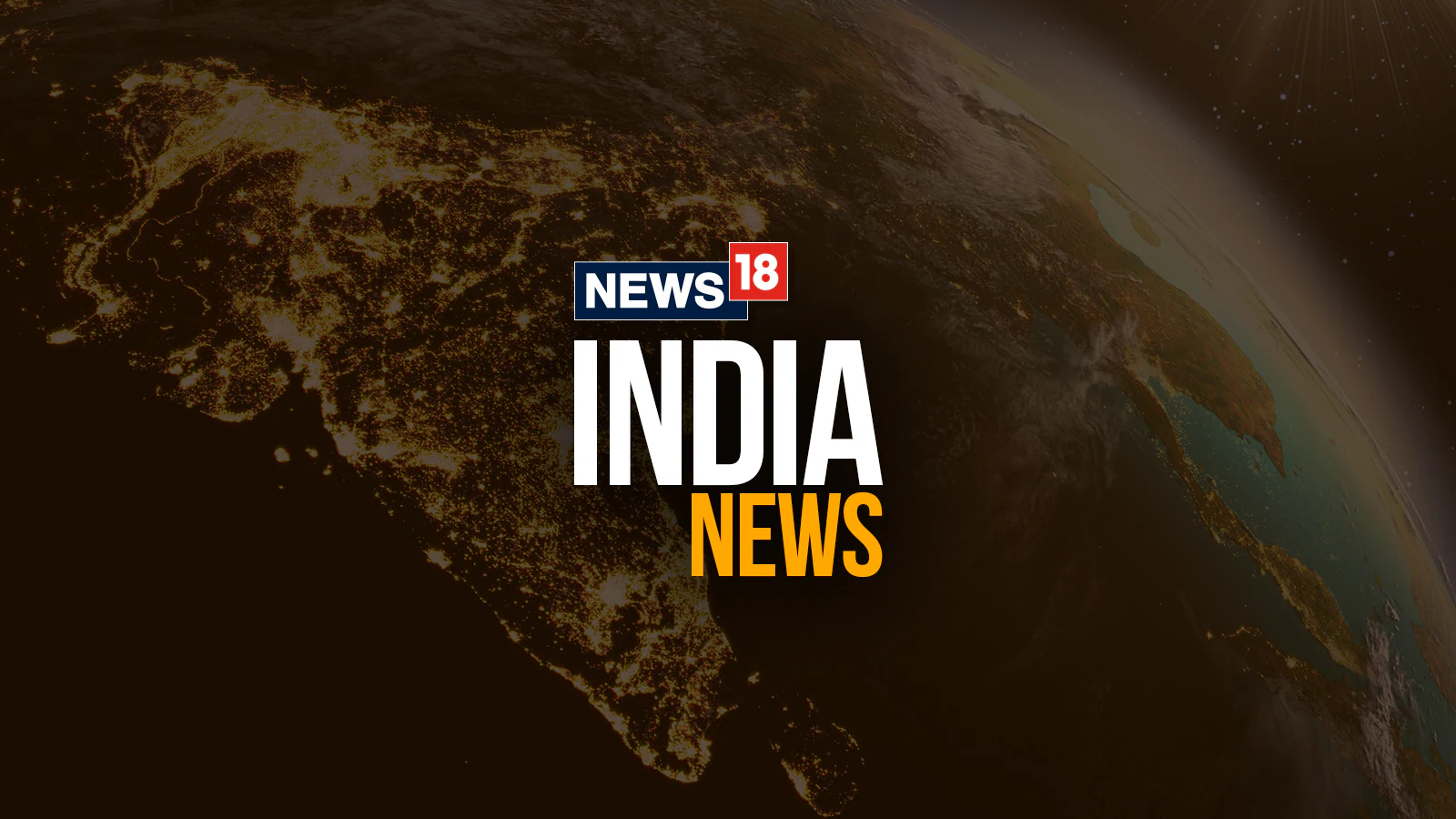
Skip to main content
Close main menu
Live Science
Sign up to our newsletter
View Profile
Search Live Science
Planet Earth
Archaeology
Physics & Math
Human Behavior
Science news
Life’s Little Mysteries
Science quizzes
Newsletters
Story archive
Pawnee Star Chart
JWST ‘starlit mountaintop’ photo
Ant clones members of another species
COVID vaccine poll
Best star projecter
Don’t miss these
Best lenses for astrophotography 2025 — capture the cosmos in detail
Electronics
Best astrophotography cameras 2025: Shoot for the stars
Best cameras 2025
Canon RF 100mm f/2.8L Macro IS USM lens review
Best macro lenses 2025: Get close to nature with incredible detail
Best wildlife lenses under $1,000 — ideal for safari or even birds in the park
OM System OM-3 review — a camera for wildlife and astrophotographers alike?
Canon EOS R5 II review
Best lenses for wildlife photography 2025 — crisp, detailed wildlife shots
Best cameras for wildlife photography 2025: Shoot nature like a pro
We tested the Canon EOS R6 II in a nature reserve — here’s our verdict
Don’t miss out on over $1400 off the Sony A1. Only six left, and not on Amazon!
Best spotting scopes in 2025 for birdwatching and wildlife observation
Best beginner telescopes 2025: Start your stargazing journey
Last chance! The Canon EOS R8 is still cheapest at Walmart — just in time for the Perseids and late summer wildlife
Viltrox AF 16mm f/1.8 FE lens review
The Viltrox AF 16mm f/1.8 FE is a stunning fast ultra wide-angle prime producing excellent image quality for landscapes and astrophotography.
James Abbott
16 September 2025
When you purchase through links on our site, we may earn an affiliate commission. Here’s how it works.
(Image: © James Abbott)
Live Science Verdict
The Viltrox AF 16mm f/1.8 FE is a fantastic lens for landscape and astrophotography. Image quality is impressive, both wide open and stopped down for a larger depth-of-field, while the build quality and price are exceptional.
$522 at BHPhoto
$580 at Amazon
$580 at BHPhoto
Check Walmart
Fantastic build quality
Excellent image quality
Great light-gathering capability
Only two lens mounts
Average AF speeds
Not as fast as f/1.4
Best picks for you
Best lenses for astrophotography 2025 — capture the cosmos in detail
Best astrophotography cameras 2025: Shoot for the stars
Best cameras 2025
Why you can trust Live Science
Our expert reviewers spend hours testing and comparing products and services so you can choose the best ones for you. Find out more about how we test.
Functionality
Performance
Should you buy?
If this isn’t for you
How we test
In a world where camera sensors are improving all the time, we need lenses that are capable of resolving vast amounts of detail, and that’s exactly what the Viltrox AF 16mm f/1.8 FE is capable of. This professional-quality prime lens is perfect for astrophotography and landscape photography, thanks to its ultra wide-angle field of view and fast maximum aperture.
What makes this lens so special, alongside the aforementioned attributes, is the fact that it’s available for a bargain price of just $464 / £533 and produces stunning image quality. Have a look around, and you will struggle to find a similar prime lens at this price. This full-frame lens is available in Nikon Z-Mount and Sony E-mount.
Despite being a full-frame lens, the 16mm f/1.8 can also be used with APS-C cameras to provide an equivalent focal length of 24mm, which is also a useful focal length for both landscapes and astrophotography. The advantage here is that if you currently shoot with an APS-C camera and plan to upgrade to full-frame later, this lens will keep working for you.
For a prime lens, the 16mm does have some interesting and useful features that further increase its attractiveness. Like most primes, it doesn’t feature Image Stabilization, but it does have a manual aperture ring with stepped and stepless control and a couple of programmable Fn buttons alongside its excellent build quality.
Viltrox AF 16mm f/1.8 FE (Black) at Amazon for $580
Viltrox AF 16mm f/1.8 FE: Design
The Viltrox AF 16mm f/1.8 FE is compact but quite heavy for a wide-angle prime. (Image credit: James Abbott)
Compact design
Weather sealing
Excellent build quality
Fast ultra wide-angle primes can be quite hefty pieces of glass, but a focal length of 16mm combined with an f/1.8 maximum aperture seems to be something of a sweet spot in terms of size and weight.
The 16mm f/1.8 is a fairly compact and lightweight lens at just 3.35 x 4.06 in / 85.2 x 103 mm with a weight of 19.4 oz / 550 g, so it balances well with full-frame and even APS-C camera bodies.
Key specifications
Type: Full-frame prime lens
Focal length: 16mm
Maximum aperture: f/1.8
Lens mount: Sony FE / Nikon Z
Weight: 19.4 oz / 550 g
Dimensions: 3.35×4.06 in / 85.2×103 mm
Filter thread: 77 mm
Release date: May 2023
The lens is made up of 15 elements in 12 groups, including four ED glass and three aspherical lenses. This design aims to deliver sharpness, detail and high contrast while minimizing distortion at wider apertures, and the lens undoubtedly achieves this.
Sign up for the Live Science daily newsletter now
Get the world’s most fascinating discoveries delivered straight to your inbox.
Contact me with news and offers from other Future brandsReceive email from us on behalf of our trusted partners or sponsorsBy submitting your information you agree to the Terms & Conditions and Privacy Policy and are aged 16 or over.
The front element features an HD Nano multilayer coating with a water-resistant and antifouling coating. The front element isn’t bulbous, which is great, and the filter thread size is 77mm, so you don’t have to spend a fortune on circular filters.
One thing we did notice when using 100mm square filters is that the filter holder adaptor ring was difficult to remove from the front of the lens, even when it was 100% screwed on correctly.
Image 1 of 3
The screen on the Viltrox AF 16mm f/1.8 FE shows useful focus information and the aperture setting.(Image credit: James Abbott)
Two customizable Fn buttons help you to personalize functionality.(Image credit: James Abbott)
The aperture ring can be set to stepped or stepless operation.(Image credit: James Abbott)
The minimum focusing distance is just 10.6 in / 27 cm, which will be most useful for landscape photographers when focus stacking. This is, of course, of no use for astrophotography.
The aperture is made up of nine blades rather than 11, but this doesn’t produce any problems despite being slightly less circular than 11-blade apertures.
The build quality of the lens is impressive with its all-metal body and weather sealing, giving the 16mm f/1.8 a premium look and feel. The manual focusing ring is wide enough for gloved use.
The lens is designed for both photo and video capture, so the manual aperture ring can be set to stepped and stepless operation via the switch on one side of the lens. Other controls include two customizable Fn buttons and an AF/MF switch.
Viltrox AF 16mm f/1.8 FE: Functionality
The Viltrox AF 16mm f/1.8 FE front element isn;t bulbous and the filter thread is 77mm. (Image credit: James Abbott)
Customizable Function buttons
Digital color screen
Average AF speeds
As far as prime lenses go, the 16mm f/1.8 alongside Viltrox’s Pro and LAB series lenses is surprisingly feature-packed compared to much of the competition. There’s no optical Image Stabilization; you’ll have to use IBIS if your camera features it, but this lens, which is designed for photo and video capture, has a few tricks up its sleeve that you won’t see available with other lenses.
Since this is a third-party lens, firmware updates can’t be applied in the same way as OEM lenses, but Viltrox has come up with a clever fix for this using a combination of Bluetooth and the Viltrox Lens app.
With the lens unattached from a camera, there’s a USB-C port on the lens mount that’s used to power the lens. Once powered, it can be connected to the Viltrox Lens app, where you can update firmware, customize the Fn buttons and customize the digital screen’s welcome screen.
The color digital screen shows the focus distance and the aperture setting, as well as showing the active Fn control. It’s an interesting feature that’s in essence a digital version of the focusing distance scale window on older DSLR and SLR lenses. It’s most useful when you want to adjust settings quickly without looking at the camera LCD screen or the EVF.
Autofocus is far from the fastest we’ve experienced, and it’s quicker with the aperture wide open at f/1.8 than it is at f/11, for example. It slows as you stop down. With the lens at f/11 or f/16, it takes about half a second to lock onto subjects, while wide open, it’s roughly twice as fast.
Autofocus is driven by an SMT stepping motor, which is claimed to be virtually silent, and this is correct. AF is quiet, but it is audible. Autofocus is absolutely fine for landscape photography, while astrophotographers will exclusively use manual focus, which is comfortable to use.
Viltrox AF 16mm f/1.8 FE: Performance
The all-metal design includes weather-sealing. (Image credit: James Abbott)
Fantastic image quality overall
Excellent sharpness at f/1.8
Great corner sharpness
There’s no getting around the fact that fast prime lenses are the best option for astrophotography. And while many focal lengths provide ideal fields of view for this type of photography, it’s ultra wide-angle lenses like this that allow you to capture more of the sky and to enjoy greater light-gathering capabilities.
Wide-angle lenses, by their nature, allow more light to reach the sensor. Combined with a fast maximum aperture of f/1.8, you’re onto a winning combination. Of course, image quality is a hugely important factor, and the 16mm f/1.8 is incredibly sharp at f/1.8 and produces excellent corner and edge sharpness to match.
Wide open sees the most vignetting, which is almost gone when you stop down to f/2.8 and completely gone at f/4. There is an Adobe Lightroom Lens Profile available for this lens, which removes the vignette and also the tiny, pretty much unnoticeable amount of barrel distortion that the lens produces.
Image 1 of 5
Aperture f/1.8, shutter speed 5secs, ISO 800. Shot with a Sony A7R V and a Viltrox AF 16mm f/1.8 FE lens on a Three Legged Thing PUNKS Brian 2.0 tripod.(Image credit: James Abbott)
Aperture f/1.8, shutter speed 8secs, ISO 800. Shot with a Sony A7R V and a Viltrox AF 16mm f/1.8 FE lens on a Three Legged Thing PUNKS Brian 2.0 tripod.(Image credit: James Abbott)
Aperture f/1.8, shutter speed 5secs, ISO 800. Shot with a Sony A7R V and a Viltrox AF 16mm f/1.8 FE lens on a Three Legged Thing PUNKS Brian 2.0 tripod.(Image credit: James Abbott)
Aperture f/16, shutter speed 30secs, ISO 100. Shot with a Sony A7R V and a Viltrox AF 16mm f/1.8 FE lens on a Three Legged Thing PUNKS Brian 2.0 tripod.(Image credit: James Abbott)
Aperture f/16, shutter speed 3.2secs, ISO 100. Shot with a Sony A7R V and a Viltrox AF 16mm f/1.8 FE lens on a Three Legged Thing PUNKS Brian 2.0 tripod.(Image credit: James Abbott)
Sharpness levels across the frame increase as you stop down to the sweet spot of the lens at f/8, with f/11 still exhibiting high levels of sharpness. The minimum aperture of the lens is f/22, which does unfortunately, exhibit a loss of sharpness due to diffraction alongside f/16. You can, however, achieve great results at f/16 when shooting landscapes, although f/11 will resolve more detail.
The overall image quality is excellent with minimal distortion, barely any at all, and also minimal chromatic aberration. These are both impressive characteristics considering the wide field-of-view of the lens, once again highlighting its suitability for subjects including landscape and astrophotography, where detail is everything.
Viltrox AF 16mm f/1.8 FE: Price
The Viltrox AF 16mm f/1.8 FE is available for the bargain price of just $464 / £533, which is incredible for a pro-spec prime lens. In the box, you get the lens itself, a lens hood, front and rear lens caps and a soft lens case.
To give the price some perspective, the Sony FE 16mm f/1.8 G costs $848 / £849, which is quite a lot more. It’s a smaller and lighter lens, but the Viltrox AF 16mm f/1.8 FE itself is still a compact and fairly lightweight lens, given the build quality.
We tested the Sony FE version, but there’s also a Nikon Z-mount version available. There are no other lens mounts available, which is a shame, but perhaps we may see more in the future.
Should you buy the Panasonic Viltrox AF 16mm f/1.8 FE?
✅ You want a fast, wide-angle prime lens that’s inexpensive.
✅ You want excellent image quality when shooting wide open.
Don’t buy it if:
❌You would prefer the versatility of a zoom lens.
❌ You’d like a faster and wider lens for astrophotography.
Whether you shoot with a full-frame Sony camera or even a Sony APS-C camera, this is a lens you really must consider for astrophotography and landscape photography.
The ultra wide-angle focal length, excellent image quality, its robust build and highly affordable price all work in its favor. It’s not as fast as an f/1.4 lens, but this maximum aperture would require the lens to be much larger and heavier.
Plus, despite being a prime lens, the 16mm f/1.8 offers several useful features, including a small digital screen showing useful information, two customizable Fn buttons, a manual aperture ring with stepped or stepless operation and app-based firmware updates.
There’s no built-in Image Stabilization, but its absence helps to keep the size of the lens small, and many cameras offer In-body Image Stabilization anyway, if you need it.
If the Viltrox AF 16mm f/1.8 FE isn’t for you
Sony FE 20mm f/1.8 G
$755.97 at Walmart
$848 at Amazon
$848 at BHPhoto
$848 at Best Buy
The Sony FE 20mm f/1.8 G is a stunning lens if you’d like a slightly less wide lens, and one that easily performs as well as a G Master lens despite its attractive price.
Sony FE 16-35mm f/2.8 GM II
$2,298 at BHPhoto
$2,498 at Amazon
$2,498 at Best Buy
$6,996 at Adorama
If you’d prefer maximum versatility for astrophotography and landscape photography, the impressive Sony FE 16-35mm f/2.8 GM II lens is a must-have ultra-wide zoom.
Sony FE 16mm f/1.8 G
$798 at BHPhoto
$848 at Amazon
$848 at Adorama
$848 at Best Buy
If you’d prefer Sony’s own 16mm lens, the Sony FE 16mm f/1.8 G is exactly what you’re looking for. It is, however, more expensive than the Viltrox 16mm and optically inferior.
How we tested the Viltrox AF 16mm f/1.8 FE
The Viltrox AF 16mm f/1.8 FE was tested over several weeks to capture landscapes lit by a full moon and seascapes around sunset. The lens was attached to a Sony A7R V since the high-resolution sensor is unforgiving and clearly captures the optical flaws of lenses.
The Viltrox AF 16mm f/1.8 FE was used normally in a variety of conditions to test its use in different shooting situations and to assess functionality, including autofocus performance.
Photos were also taken in daylight to check for distortion and aberrations. Sharpness was also checked throughout the aperture range to look at overall sharpness, edge sharpness, corner sharpness and diffraction at a narrower aperture.
Viltrox AF 16mm F1.8 FE: Price Comparison
No price informationCheck Amazon
No price informationCheck Walmart
We check over 250 million products every day for the best prices
powered by
James Abbott
James is an award-winning freelance landscape and portrait photographer, as well as a highly experienced photography journalist working with some of the best photography magazines and websites with a worldwide audience. He’s also the author of The Digital Darkroom: The Definitive Guide to Photo Editing. www.jamesaphoto.co.uk
You must confirm your public display name before commenting
Please logout and then login again, you will then be prompted to enter your display name.
Best lenses for astrophotography 2025 — capture the cosmos in detail
Best astrophotography cameras 2025: Shoot for the stars
Best cameras 2025
Canon RF 100mm f/2.8L Macro IS USM lens review
Best macro lenses 2025: Get close to nature with incredible detail
Best wildlife lenses under $1,000 — ideal for safari or even birds in the park
Latest in Technology
AI could use online images as a backdoor into your computer, alarming new study suggests
The best star projector we’ve tested is 38% cheaper on Amazon, taking it to one of its lowest-ever prices
Why do AI chatbots use so much energy?
Electronics breakthrough means our devices may one day no longer emit waste heat, scientists say
New EV battery tech could power 500-mile road trips on a 12-minute charge
AI slop is on the rise — what does it mean for how we use the internet?
Latest in Reviews
Suunto Run fitness tracker review — Light, feature-packed and reasonably priced
Garmin Forerunner 970 review — A serious smartwatch for running pros
Garmin Forerunner 570 review — Bright, accurate, slightly overpriced
Levoit Sprout air purifier review — Baby-friendly solution to airborne pollutants
Whoop MG review — A screenless fitness tracker for performance geeks
Olympus OM-D E-M10 Mark IV review
LATEST ARTICLES
‘This needs to happen fast’: Scientists race to cryopreserve a critically endangered tree before it goes extinct
Asteroid Ryugu once had ‘flowing water’, shocking analysis hints
Volcanic ‘googly eyes’ stare into space from skull-like peninsula
World’s oldest mummies were smoke-dried 10,000 years ago in China and Southeast Asia, researchers find
1,900-year-old oil lamp that provided ‘light in the journey to the afterlife’ found in Roman cemetery in the Netherlands
Live Science is part of Future US Inc, an international media group and leading digital publisher. Visit our corporate site.
Contact Future’s experts
Terms and conditions
Privacy policy
Cookies policy
Accessibility Statement
Advertise with us
Web notifications
Editorial standards
How to pitch a story to us
Future US, Inc. Full 7th Floor, 130 West 42nd Street,
Please login or signup to comment
Please wait…



